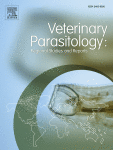Ver ítem
- xmlui.general.dspace_homeCentros e Institutos de InvestigaciónCICVyA. Centro de Investigación en Ciencias Veterinarias y AgronómicasInstituto de BiotecnologíaArtículos científicosxmlui.ArtifactBrowser.ItemViewer.trail
- Inicio
- Centros e Institutos de Investigación
- CICVyA. Centro de Investigación en Ciencias Veterinarias y Agronómicas
- Instituto de Biotecnología
- Artículos científicos
- Ver ítem
Development of a PCR assay for identification of Neobalantidium coli (Pomajbíková et al., 2013) in Argentina
Resumen
Neobalantidium coli (Pomajbíková et al., 2013) is a cosmopolitan ciliate which colonizes the intestine of humans and animals. Pigs are the most important host and reservoir for this parasite, although others mammals have been described. Humans can acquire the disease through the ingestion of water and food contaminated with cysts and even from person to person contact. Farmers and slaughterhouse workers from rural areas of developing countries have an
[ver mas...]
Neobalantidium coli (Pomajbíková et al., 2013) is a cosmopolitan ciliate which colonizes the intestine of humans and animals. Pigs are the most important host and reservoir for this parasite, although others mammals have been described. Humans can acquire the disease through the ingestion of water and food contaminated with cysts and even from person to person contact. Farmers and slaughterhouse workers from rural areas of developing countries have an increased incidence of balantidiosis. In Argentina, despite swine production on family farms covers 70% of domestic consumption requirements; there is a lack of veterinary animal health planning which result in high rate of animal mortality, as well as environmental risk due to inefficient facilities and mismanagement of manure and effluents. At present there are no epidemiological data on balantidiosis in Argentina, except for isolated reports. Therefore, the aims of this study were to establish the frequency of N. coli in pigs raised under different conditions and to explore the zoonotic potential. In order to confirm the identity of Neobalantidium coli like-cysts founded in the feces, a set of N. coli specific primers based on 18S rRNA gene sequences was designed. The molecular identification of N. coli was performed in 88.9% (16 out of 18) of swine stool samples in which cysts had been visualized. The fecal samples obtained from pigs raised on more open farmland showed a lower percentage of N. coli than those obtained from animals raised in swine pens. On the other hand, molecular identification of N. coli was also performed in human feces. Pairwise comparison of sequences obtained from pigs and human fecal samples from the NW Region of Argentina showed a high percentage of similarity, indicating a possible zoonotic transmission.
[Cerrar]

Fuente
Veterinary parasitology: regional studies and reports
10 : 114-118. (December 2017)
Fecha
2017-12
ISSN
2405-9390
Formato
pdf
Tipo de documento
artículo
Palabras Claves
Derechos de acceso
Restringido
 Excepto donde se diga explicitamente, este item se publica bajo la siguiente descripción: Creative Commons Attribution-NonCommercial-ShareAlike 2.5 Unported (CC BY-NC-SA 2.5)
Excepto donde se diga explicitamente, este item se publica bajo la siguiente descripción: Creative Commons Attribution-NonCommercial-ShareAlike 2.5 Unported (CC BY-NC-SA 2.5)

